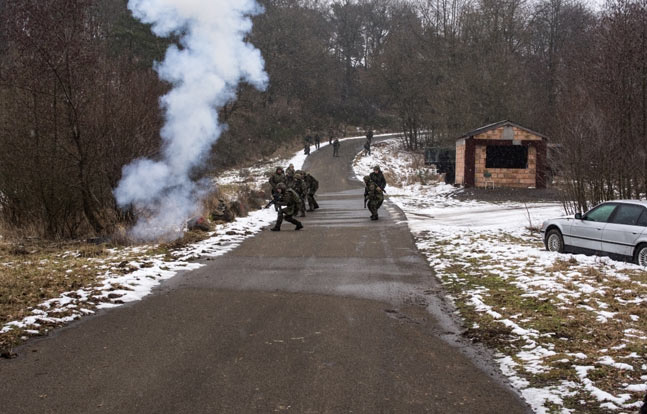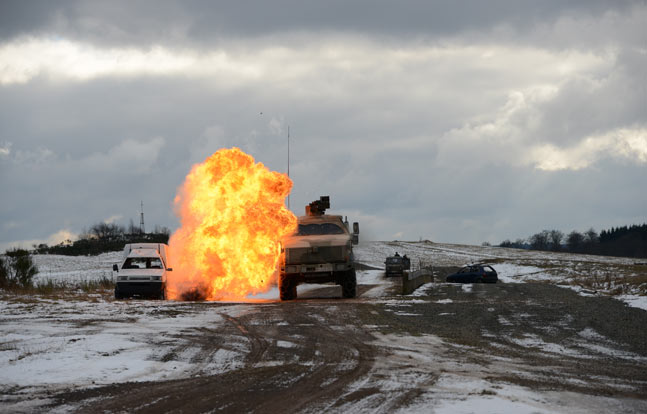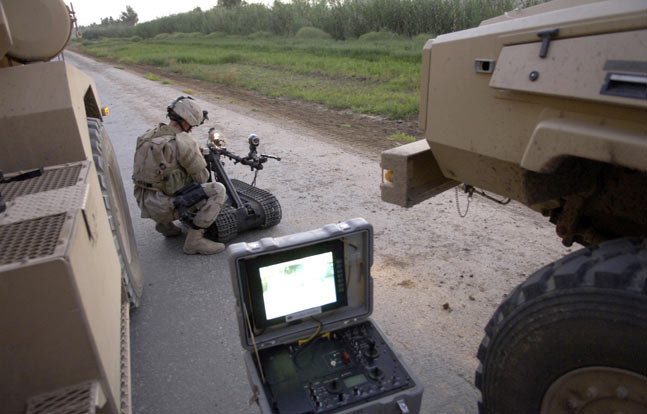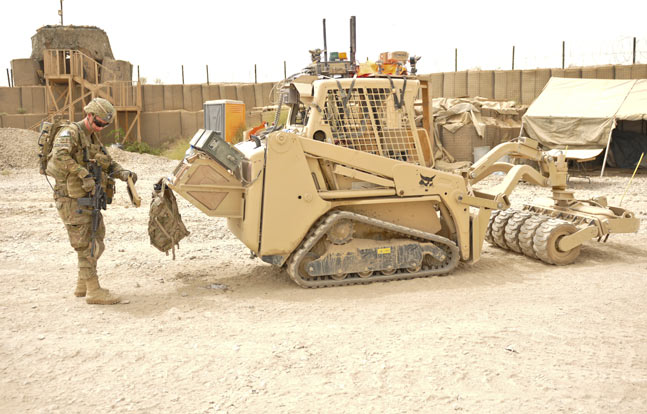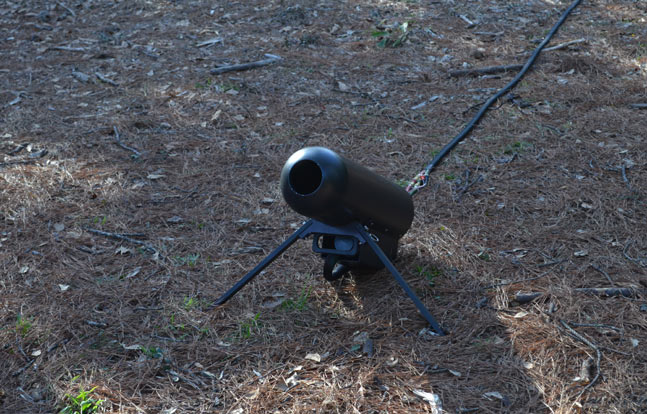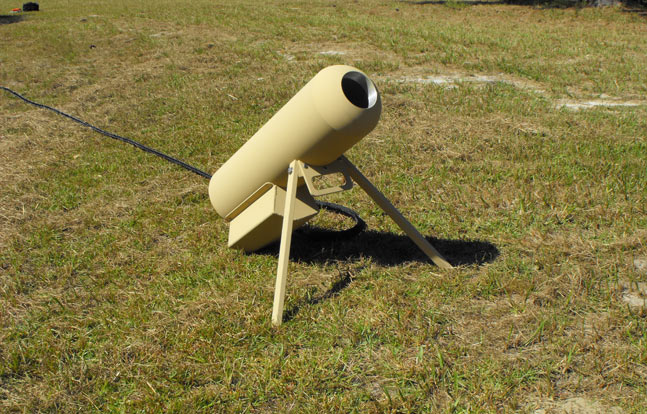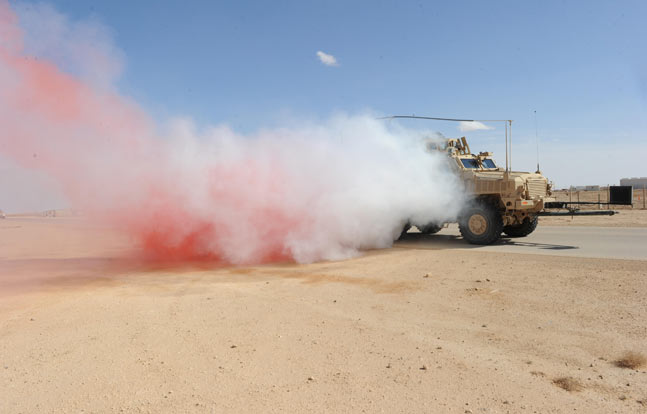No development reflects the changing nature of warfare more than improvised explosive devices, or IEDs. They are the weapons of the weak, those who fight wars of insurgency against superior forces by using surprise and ambush with any lethal materials at hand. However, their crude origins belie the tactical effectiveness of IEDs. One statistic demonstrates their harrowing potency: More than half the battle deaths among coalition forces in over 12 years of conflict in Afghanistan are due to IEDs. As Bill Fiske, a retired U.S. Army lieutenant colonel with 25 years of counter-IED experience and the vice president of business development at Improvised Electronics, a new entrant in the counter-IED training market, notes, “The IED threat is much more than just Afghanistan and Iraq. This is the weapon of choice for insurgency campaigns all across the world.”
“Effective training translates into effective responses that eliminate threats and reduce casualties…”
Even worse, these weapons have migrated from the battlefield to Main Street. Consider the Boston Marathon bombing carried out by the hapless, misguided brothers who followed online instructions to build two small IEDs that killed three spectators and wounded 264, including at least 14 who lost limbs. Nearly all the experts expect more such instances in the U.S., and these tragedies can occur anywhere, anytime.
Improvised Electronics’ president, Jeff Jennings, a former Navy electronics technician, recognizes the growing domestic threat. “We have learned a hard lesson in this country that the IED threat to the homeland is as real as ever,” he said. “I’ve been surprised at how few training dollars there are for civilian bomb squads. It seems like we have more focus in training Afghan bomb techs than we do in training our own. We are risking the loss of this hard-won knowledge.”
Advertisement — Continue Reading Below
As IEDs become pervasive threats to homeland security as well as troops in battle, the need for effective training to neutralize these devices and respond to ambushes has grown exponentially. Counter-IED training for explosive ordnance disposal (EOD) technicians is definitely a growing industry, as military units and law enforcement agencies prepare specialists to handle related emergencies at home and around the world. Effective training translates into effective responses that eliminate threats and reduce casualties, so counter-IED methods that replicate reality to prepare responders fully for contingencies is understandably in high demand.
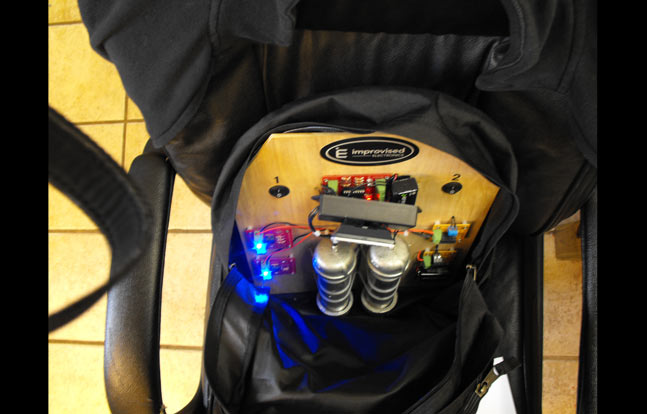
Blast Training
Not surprisingly, a few large defense companies have created divisions specializing in counter-IED training, but plenty of room remains in the market for innovative providers who add value to the training experience by creating greater fidelity in simulated scenarios that make both military and law enforcement counter-IED operators far more prepared for the real thing when they must take effective action in potentially lethal situations.
Advertisement — Continue Reading Below
“Blast reports exceed 130 decibels— equivalent to a military jet’s takeoff just 50 feet from human ears—although they are not sustained and last just a fraction of a second…”
Improvised Electronics is one of the leading small counter-IED training enterprises that have captured a large segment of this growing EOD market in a surprisingly short time. Jennings described how he got started in 2009 while attending college. “I started Improvised Electronics out of a garage and was quickly able to apply technology to the problem of IED training. The legacy product offerings were unreliable and expensive. We fixed that with solid engineering and a scalable production process,” he said.
Based in Destin, a beach community near Eglin Air Force Base in the Florida panhandle, Improvised Electronics is producing hardware and providing training programs to a growing customer base. The reason for the startup’s success is a unique product line that sets it apart from competitors. “We’re not the first company to make training aids,” Jennings explained. “What we’ve done is produce training devices that can be programmed and networked to replicate actual IEDs. And, of course, you’ll know when one of our devices goes off. We utilize propane and oxygen to produce loud but harmless explosions. Most manufacturers simply produce standard IED circuits with buzzers. We incorporated medium- and high-tech methodologies to enable trainers to create a wide variety of scenarios for operators and to build in a lot of unexpected events, just like the real thing. We also include time-saving auto-reset capabilities as well as the ability to integrate a variety of equipment into scenarios.”
Although propane/oxygen blast and automatic weapon simulators have been around for half a century or more, Improvised Electronics has incorporated major improvements into its systems to permit advanced programming and networking beyond 1,000 meters that integrates them into any scenario without additional equipment to produce extremely loud and reliable results on any training range, detonating units with instrumented triggers. Blast reports exceed 130 decibels— equivalent to a military jet’s takeoff just 50 feet from human ears—although they are not sustained and last just a fraction of a second, and they are just below the pain threshold of 140 decibels. Systems operate with a single circuit board using digital electronics and an LCD interface.
Advertisement — Continue Reading Below
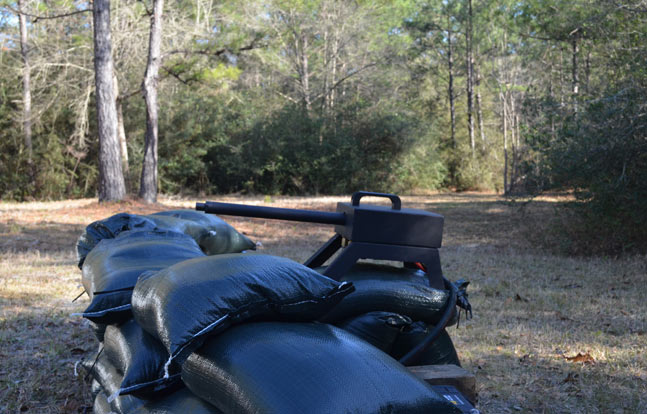
Mission Ready
The company’s training range instrumentation is equally sophisticated. Systems are lightweight and scalable, with wireless networks for applicability on any range at affordable prices. All systems are compatible with other training equipment for “plug and play” to maximize versatility. Improvised Electronics records training scenarios on HD video with sound to provide instant feedback to operators, helping them understand needed methodological changes and increase their counter-IED effectiveness. Available training aids replicate actual IEDs as much as possible in appearance and functionality to provide a meaningful experience to operators while providing durability for repeated use and auto-reset capability if the aids are set off.
“Improvised Electronics offers not only simulated explosions but also devices that replicate automatic gunfire, all programmable in integrated scenarios…”
These features enable trainers to offer a full range of simulated emergencies with minimal setup and configuration time, and saving direct and indirect costs. Jennings calls this approach a holistic EOD training solution with a live training platform rather than just a catalog of products. Cost is a critical factor. “We’re all going to have to learn how to do more with less, and that’s driving our development,” Jennings noted. “The IED threat doesn’t care about budgets, but our customers do. We need to help them get the results they need, on time and under budget. The solution is a lean manufacturing process and some standardization of the products. IEDs are constantly evolving, but the cores of the
devices change very little.
Advertisement — Continue Reading Below
“Realism is important, but it’s just a part of what we do. Our focus is, we do the work so you don’t have to,” Jennings added. A trainer needs merely to turn the system on— little configuration is required, reducing the possibility of error. The equipment can replicate several situations, including a common insurgent tactic: an IED attack with an ambush before the dust clears from an explosion. To do this, Improvised Electronics offers not only simulated explosions but also devices that replicate automatic gunfire, all programmable in integrated scenarios.
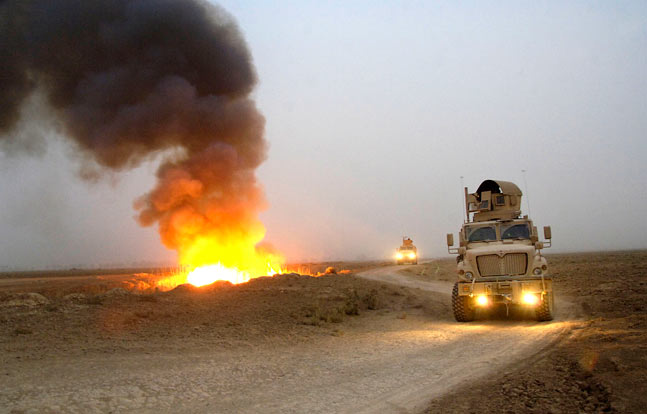
Adapt & Overcome
Jennings added that IE’s success rests to a large extent on the smooth developmental path for the company’s high-fidelity training devices. He said there were no technical issues when he applied science to the IED training problem. “The technical side wasn’t a challenge,” he noted.
Advertisement — Continue Reading Below
“The list of clients taking advantage of this expertise includes U.S. Army Special Forces, EOD Training Units and FBI Hazardous Devices School…”
“The challenge is to bring this new technology to the folks doing the training and show exactly how these systems lead to better results and more prepared EOD technicians,” added Bill Fiske. “So far, everyone has been very receptive to what we have to offer.”
Improvised Electronics’ product line is well established, so it is concentrating on training offerings that will include a major project for the Navy’s special operations organization. If the need arises, Improvised Electronics is prepared to shift its current focus from manufacturing to staffing for operational training. The company’s list of more than a dozen military and LE training courses is comprehensive and growing, with particular emphasis on the math and science that underlies IED design.
“Our take on classroom IED electronics training is definitely influenced by my Navy electronics training and my course work at the University of West Florida,” said Jennings. “Electronics and math are inseparable, but so many courses given to our EOD techs attempt to remove the math. The result is poor quality training where students copy circuits from PowerPoint slides. There is no reason that IED electronics training should be different from the training we give our technicians and engineers in other fields.”
Advertisement — Continue Reading Below
“You can’t train for this fight with a computer game,” Fiske added. “Live training tactics and technology don’t always get the most attention, but the IED fight is won in training. If we’re only preparing for what happened yesterday, we’re going to get surprised tomorrow.”
The list of clients taking advantage of this expertise includes U.S. Army Special Forces, EOD Training Units and FBI Hazardous Devices School.
Finally, the company offers custom engineering and acquisition support for product prototyping and manufacturing, system maintenance and logistical support. Moving from domestic to international markets with possible corporate partnerships is the next logical step for Improvised Electronics, and Jennings is optimistic that the company’s potential for growth is huge.
Advertisement — Continue Reading Below
For more information, call 850-736-4433 or visit improvisedelectronics.com.




